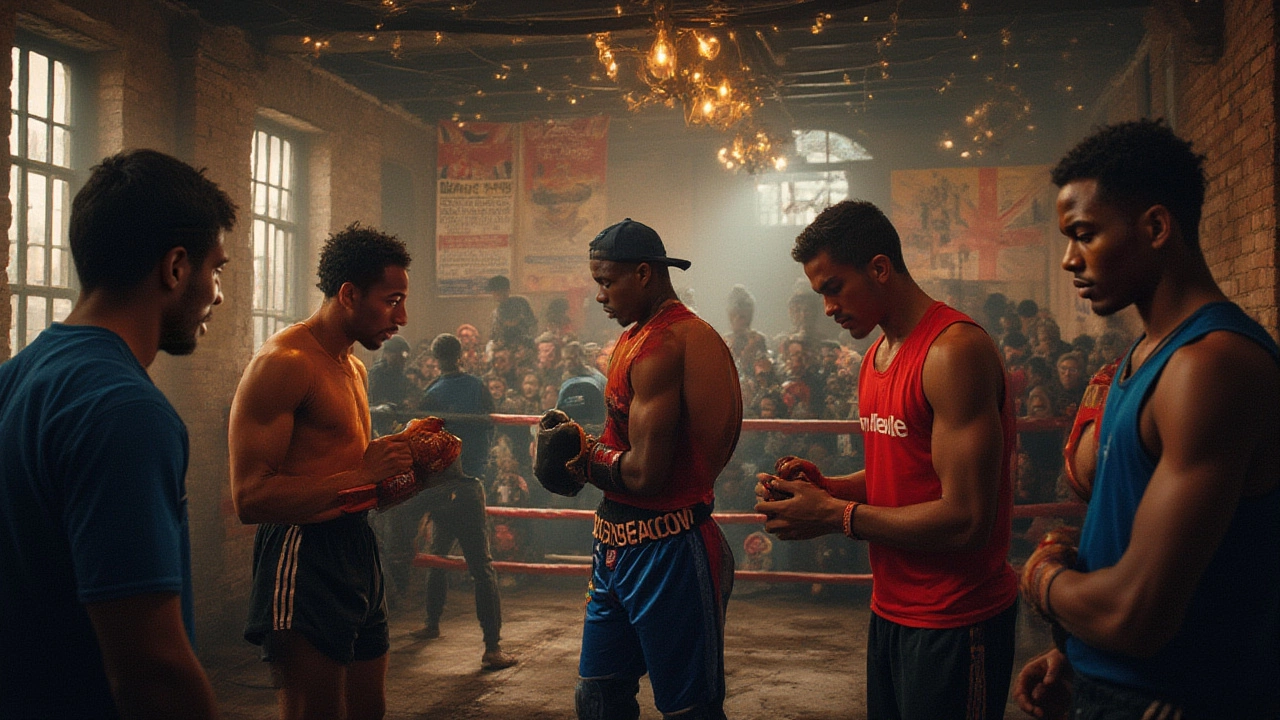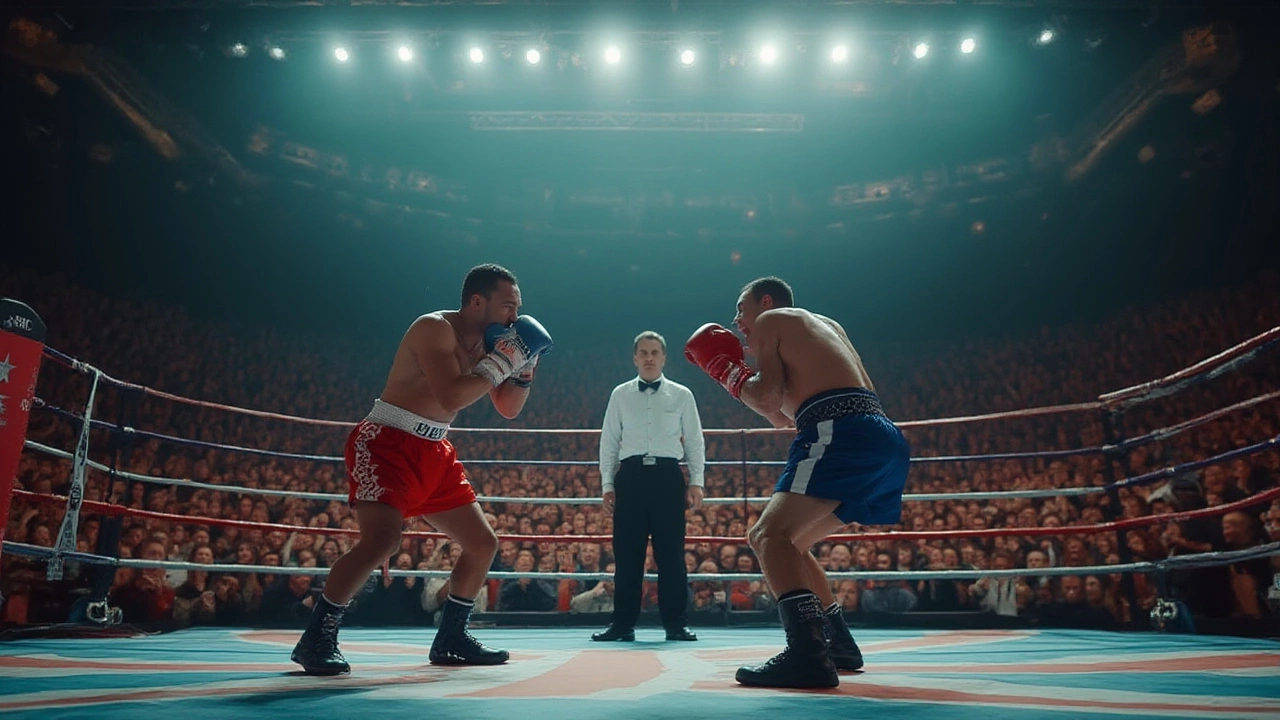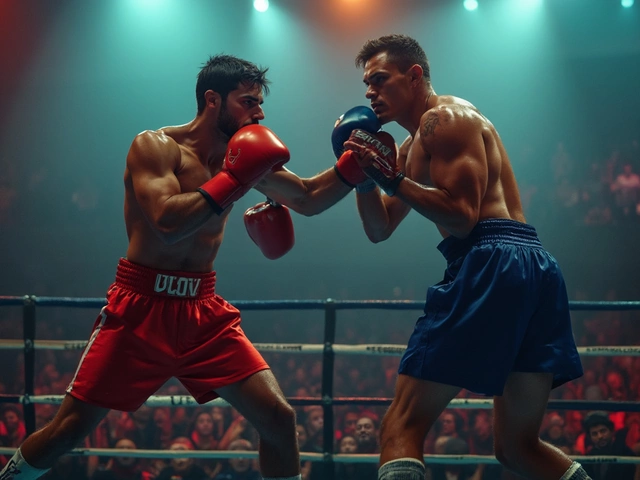How Boxing Matches Work: Rules, Rounds & What Happens in the Ring

One punch can shift the entire mood of an arena. In boxing, fans gasp at every left hook, judges scribble furiously, and fighters push themselves past the edge. You might think it’s just two people trading blows, but there’s a lot going on in a boxing match – a mix of tradition, precision, and sheer grit. Let’s peel back the layers on how these matches really work and what makes each bout tick.
The Structure of a Boxing Match
Picture this: two boxers, squared up in a 16- to 24-foot ring, surrounded by fans and camera flashes. Each match is broken into rounds—never just one endless slugfest. Professional men’s bouts usually run for up to 12 rounds, with each round lasting 3 minutes. Women’s matches normally go for 10 rounds, clocking 2 minutes each. In amateur tournaments, expect 3 rounds of 3 minutes. Between rounds, boxers retreat to corners for a 1-minute breather, where water bottles, trainers, and adrenaline await.
The bell signals the round’s start and finish. Only the referee and ringside physicians stand in the ring with the fighters. Judges sit outside, eyes fixed, scoring every punch, slip, and swing. If you’ve tuned into the Olympics or larger events like the World Championships, you’ll notice there’s not much time wasted on introductions. Fighters arrive, touch gloves, and get straight to it—no dancing around for effect.
Every step in the ring is measured. The rules, set by sanctioning bodies like the World Boxing Association (WBA) or International Boxing Federation (IBF), govern not just the rounds, but even the tiny details: glove size, hand wrapping, mouth guards, and even the thickness of the canvas. The ring itself is built to strict specifications—a flat surface over padded boards—so no one gets an unfair bounce.
Major Boxing Rules and Regulations
Rules are the backbone of boxing. No fancy kicks, elbows, or flying knees—this isn’t MMA. A legal blow must be delivered with a closed glove, from the front knuckle, above the belt. That infamous “rabbit punch” (a punch to the back of the head)? Absolutely illegal, as are low blows, holding, and hitting on the break.
Boxers wear trunks, shoes, gloves (8 to 10 ounces, depending on weight class), and a groin protector. Amateurs usually don headgear. Every boxer has to weigh in before the match—there’s no sneaking a few pounds over the limit. Miss weight by even a fraction, and the fight might be scrapped. Fights are split into weight classes, so heavyweights don’t smash lightweights. Take a look:
| Weight Class | Upper Limit (lbs) | Famous Champ |
|---|---|---|
| Flyweight | 112 | Manny Pacquiao (early career) |
| Lightweight | 135 | Vasyl Lomachenko |
| Welterweight | 147 | Floyd Mayweather Jr. |
| Middleweight | 160 | Canelo Alvarez |
| Heavyweight | No limit | Tyson Fury |
If a fighter gets knocked down, the referee counts to eight or ten. Can the boxer stand, defend themselves, and continue? If so, back to brawling. If not, it’s a knockout. The "ten-count" rule dates back to 1892, designed to give boxers a fighting chance after a flash knockdown. If it happens three times in one round (in some organizations), the fight can end there.

Scoring the Fight: Judging What’s Unseen
If there’s no knockout, it all comes down to points. Most pro fights use the 10-point must system. After each round, three judges decide who won. The round’s winner gets 10 points, the loser gets 9 (or less if battered; think knockdowns or fouls). If rounds tie, it’s 10-10, but that’s rare — judges love a winner. This adds tension, especially in close bouts where every jab matters.
But what are judges actually looking for? It’s not about wild haymakers—clean punching, effective aggression, ring control, and defense are the keys. One fighter might land fewer punches, but if those are cleaner and avoid wild swings, the judges take note. Power shots impress, but so does dodging like Muhammad Ali. Judges watch for who sets the pace and creates the action.
This system can spark controversy. Think about fights like Pacquiao vs. Bradley (2012)—almost every commentator had Pacquiao winning, but the judges handed it to Bradley. Subjectivity creeps in. That’s why instant replay tech is being tested in some regions, though old-school judges still rule the ring for now.
Curious how often decisions go to the judges? In major title fights from 2018-2023, 54% ended in decisions, while the rest finished early by knockout or technical knockout (TKO). If you’re scoring along at home, keep your own tally—you might see things differently from the judges.
Ways to Win—And Lose—a Boxing Match
Everyone loves a knockout, but that’s just one way a match wraps up. Here’s the lowdown on the most common outcomes in boxing:
- KO (Knockout): One fighter takes a punch, and can’t get up within 10 seconds after hitting the canvas. The crowd goes wild. The fight is over.
- TKO (Technical Knockout): The referee, ringside doctor, or the boxer’s own corner can stop the fight if they believe a fighter can’t safely continue. This can happen after several knockdowns, unanswered blows, or a nasty cut.
- Decision: After all rounds, the judges’ scores decide the winner. If it’s 2-1, you get a split decision. All judges agree? That’s a unanimous decision.
- Draw: Like kissing your sister—not satisfying for either side, but it happens if scores are tied or fouls ruin the action.
- Disqualification: Fouling, ignoring refs, or corner interference can get a fighter disqualified. Remember Mike Tyson’s infamous ear bite on Holyfield in 1997?
Want a quick tip? If a ref says "protect yourself at all times," they mean it. Don’t look away for a split second—you could get clocked. If a fighter loses but puts up a serious fight, you’ll often see respect and even rematches down the line. Boxing’s not just a brawl; it’s about heart, survival, and a little bit of showmanship.

The Spectacle and Intangibles of Boxing Matches
Some people come for sport, others for drama. A boxing event is part fight, part theater. Promoters build months of hype leading up to big matches—press conferences, weigh-ins, even trash-talking on social media. All of it is meant to crank up tension, sell tickets, and create a night you’ll remember.
Walk into a championship event, and you’ll see arenas shining under TV lights, smoke machines, ring girls, and pounding music. The drama doesn’t stop with the opening bell. Think about the energy when an underdog knocks out a favorite, or when a match is dead even going into the final round—the crowd hangs on every jab. Even at amateur levels, local gyms fill up with people screaming encouragement and advice.
The glove tap before the first round is about respect. But as soon as the bell rings, it’s all business. Fighters bring not just physical training, but game plans. A shorter boxer wades in close, while a tall one keeps distance with jabs. Sometimes, the favorite tires out; sometimes, a huge upset flips the script. That’s what makes boxing impossible to predict—and so addictive.
Remember, it’s a relentless mental game. Boxers spend years honing their instincts, reacting in a split second. They read opponents’ body language, feint to create space, and set traps for a finishing punch. That’s why even fights that look “boring” to some often hide complex battles for control.
That’s boxing. Layers of rules, drama, and the will to win, all packed into a few rounds that can change a career forever. Next time you catch a bout, you’ll see how much is happening beneath the punches—and maybe appreciate the ring’s strange magic just a bit more.




